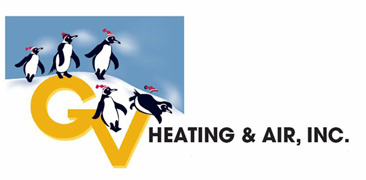
Major changes are on the horizon for the heating and cooling industry! Cooling systems moving from R-410a to newer refrigerants like R-454B refrigerant and R-32 refrigerant will be coming in 2025. These new coolants are developed to be more beneficial to the environment and comply with new regulations about global warming. But what does that mean for your present HVAC system and any new services?
This transition will minimize the environmental effect of our air conditioning systems. Starting with 2025, new AC systems will employ an alternative class of refrigerants that more closely match with climate goals. If you're considering getting an AC replacement soon, this is the perfect time to investigate how these new refrigerants can impact your home's comfort.
Why Exactly Is R-410a Being Phased Out?
For a long time, R-410a was the standard refrigerant for residential air conditioners because of its efficiency. But studies revealed that R-410a still negatively impacts global warming. Because of this, the Environmental Protection Agency (EPA) enacted a plan back in 2021. The industry will steadily discontinue R-410a to make room for refrigerants that are more eco-friendly.
The HVAC industry has undergone shifts like this before. When the industry moved away from using R-22 (commonly called Freon) to R-410a, homeowners like you had to adapt. And similarly, this change will influence how systems are designed as well as the best practices for HVAC maintenance. Both residents and HVAC technicians should prepare for these new refrigerants if they wish to keep experiencing the safest, most cost-effective cooling possible.
Which New Refrigerant Is Replacing R-410a?
The upcoming refrigerants are categorized under the new "A2L" classification and encompass the newest R-454B refrigerant and R-32 refrigerant coolants. They're developed to offer the same powerful cooling while significantly reducing their global warming potential (GWP) compared to R-410a.
R-454B refrigerant is expected to be particularly efficient due to its GWP being around 78% lower than R-410a. Although R-454B refrigerant is actually more flammable than R-410a, updates to system designs and maintenance practices will ensure servicing is just as safe to perform. In addition, contemporary cooling systems using R-454B refrigerant are much more energy efficient, contributing to substantial savings on energy bills over time, especially if you keep up with routine HVAC maintenance.
This switch isn't simply about substituting the refrigerant—it affects the whole HVAC system because the components of R-454B refrigerant make it not suitable for use in older systems. Eventually, every residence and business using R-410a will have to switch to one of the new systems.
R-410a Replacement: How Can I Prepare to Transition to New HVAC Refrigerants?
Transitioning to the new refrigerants will not be as straightforward as replacing what's used in your home's HVAC system. That's because the distinct properties of R-454B refrigerant and R-32 refrigerant make existing R-410a systems incompatible. But rest assured—you can keep using your current R-410a system for now. Just keep in mind that as time progresses, the cost of repairs and tune-ups will increase as R-410a becomes less available.
Planning ahead is the best way to stay on top of things. If your AC system is currently getting old, this is the ideal time to think about upgrading to a newer model that uses the new R-454B refrigerant. Plus, the staff here at GV Heating & Air can assist you in switching with flexible options for HVAC replacement financing.
What HVAC Refrigerant Does My Air Conditioner Use?
Not sure which refrigerant your AC system utilizes? In general, you can easily learn this information by inspecting the label on your outdoor unit. This label indicates the type of refrigerant, the model number and many other specifications about your cooling system.
But if you can't read the label or are missing your user manual, remain calm! You can always call one of the expert technicians at GV Heating & Air to assist you in figuring it out. Get all the details you need by reaching out at 763-535-2000.



